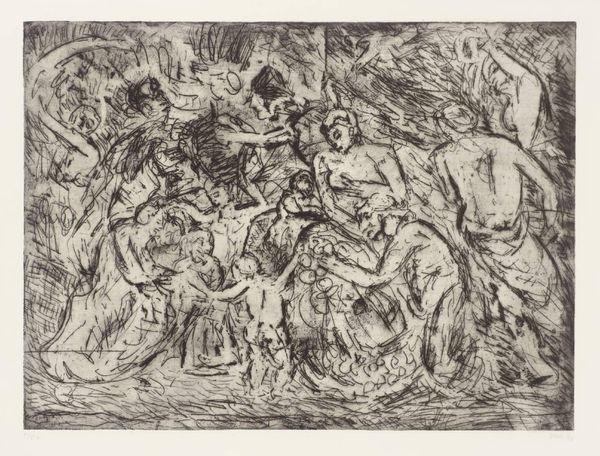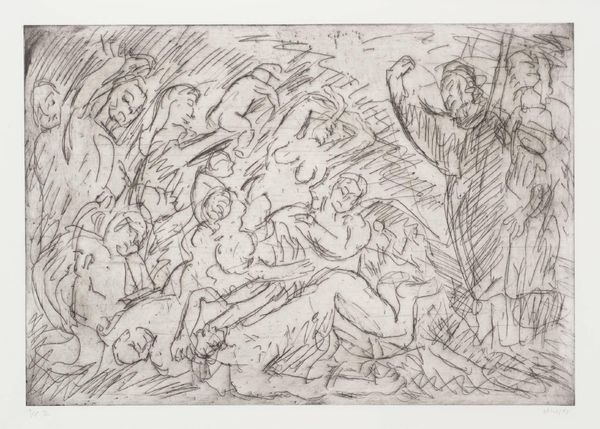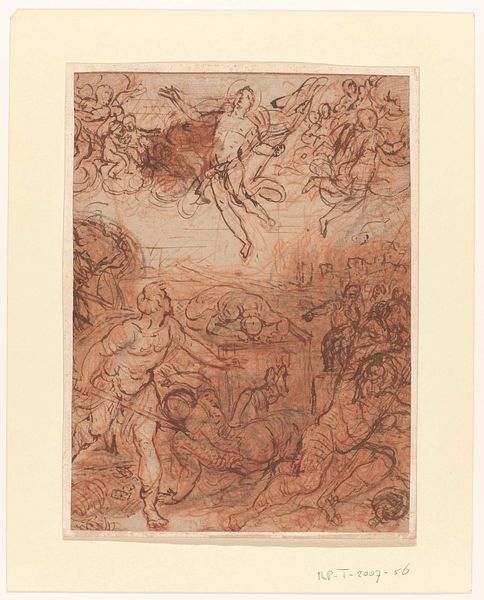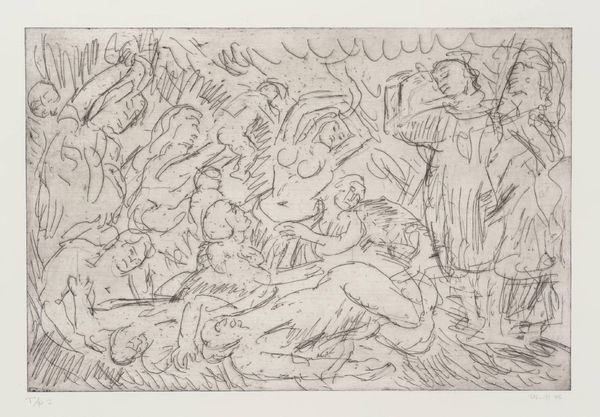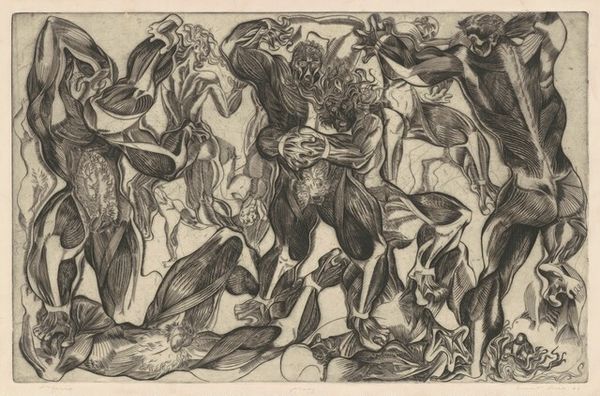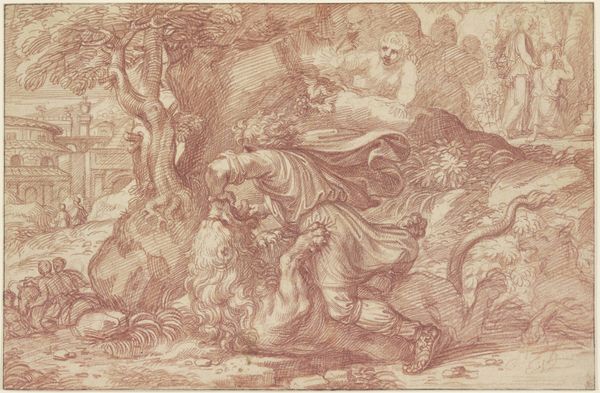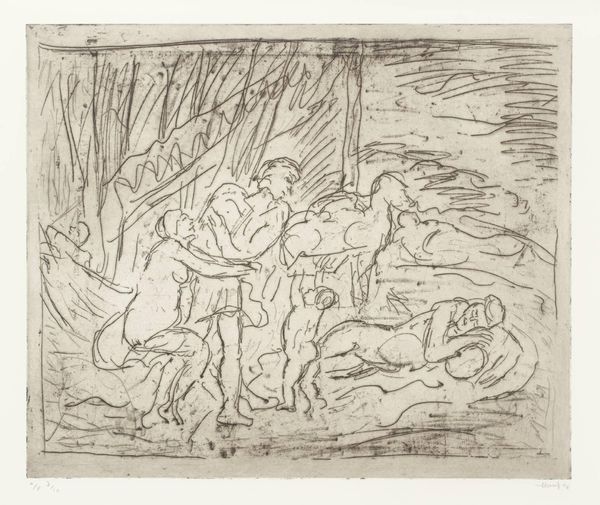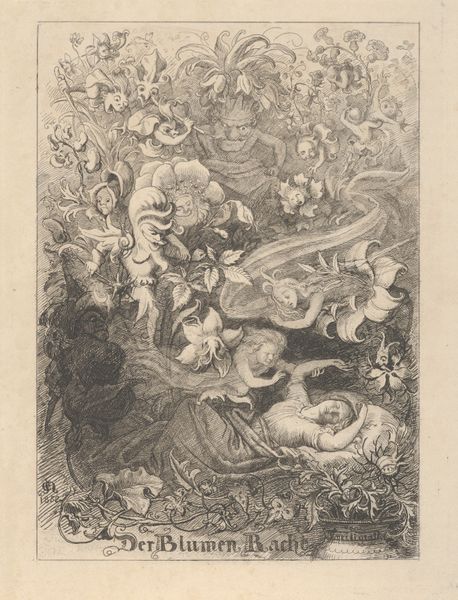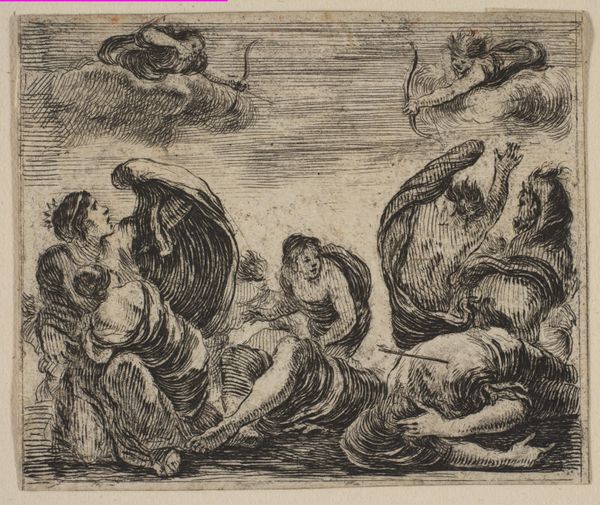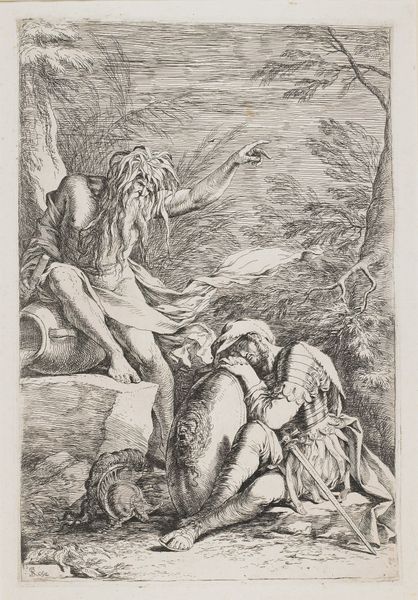
Dimensions: image: 413 x 570 mm
Copyright: © Leon Kossoff | CC-BY-NC-ND 4.0 DEED, Photo: Tate
Editor: So, this is Leon Kossoff’s ‘Minerva Protects Pax from Mars,’ a print from the Tate. It feels chaotic, a jumble of figures. What’s your take on this piece? Curator: Well, the chaos you perceive reflects a tension between public ideals and lived experience. Kossoff, working in post-war London, engages with classical mythology, but his rough, immediate style undermines any sense of triumphant heroism. Editor: How so? Curator: He’s questioning the very notion of grand narratives. The print becomes a space to negotiate how cultural myths like Pax and Minerva function, or perhaps *don’t* function, amidst the rubble of modern life. Editor: That makes a lot of sense, especially thinking about the time it was made. I see it differently now. Curator: Exactly. By understanding the socio-political context, we realize that art is a product and reflection of historical forces.
Comments
tate 7 months ago
⋮
http://www.tate.org.uk/art/artworks/kossoff-minerva-protects-pax-from-mars-peace-and-war-4-p11703
Join the conversation
Join millions of artists and users on Artera today and experience the ultimate creative platform.
tate 7 months ago
⋮
This print is one of many etchings executed by Leon Kossoff in response to, and literally in the presence of, oil paintings by old masters; in this case Minerva Protects Pax from Mars (‘Peace and War’), 1629-30, by Peter Rubens (1577-1640), owned by the National Gallery, London. Tate owns five prints by Kossoff after this Rubens painting (Tate P11700-4). The artist’s ability to explore a number of separate responses while making drawings and prints from a single subject is illustrated in these etchings. This print was never published as an edition; Tate owns the second trial proof.
